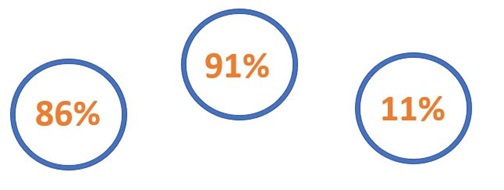Repeat after me - Ouch. Ouch! OUCH!
One of my favorite times of year is Springtime – the days are lasting longer, the sun spreads rays of warmth upon us, flowers are beginning to blossom, and the trees are breaking out with buds. The children are coming out of their wintertime screen-laden slumbers (ahh, the realities of the modern digital era) and hopping onto their bikes and skateboards. But wait, that sound… not that of a bird singing… it’s crying – Ouch! The silence of the day is broken by the sobs of pain; one of the little ones has crashed off of their bike and has a bloody knee.
Dr. Dad to the rescue! So here is the question – should we get out the salt and pour it on to the wound? Better yet, should we rub it in good and hard… you know, for effect? Absolutely not - no! Bad idea!
Someone might say at this point that this is a harsh way to start a blog; I agree. Yet, this is exactly what many investors are feeling right now – it’s the effect of 2018 and the pain keeps coming. And to top it off, right in the middle of spring comes everyone’s favorite day of the year – April 15th!!
Here is the pain I am talking about. Summed up into three of the most important numbers coming out of 2018.

Have you seen these three numbers talked about by any other Investment Strategist this year? Probably not.
What are these numbers; what do they represent:
 …of all US Equity Funds in 2018 had a negative return.1 91%. It was not a good year for equity returns, and I don’t have to state the obvious that many investors were not happy when they opened their statements at the start of the year. This is the wound.
…of all US Equity Funds in 2018 had a negative return.1 91%. It was not a good year for equity returns, and I don’t have to state the obvious that many investors were not happy when they opened their statements at the start of the year. This is the wound.
 …of all US Equity Funds in 2018 had a capital gain distribution.2 86%. Many people are asking “What… How? Why?”. Not only was it not a good year for equity returns, most Funds made distributions that investors are now needing to pay taxes on. This is the salt in the wound.
…of all US Equity Funds in 2018 had a capital gain distribution.2 86%. Many people are asking “What… How? Why?”. Not only was it not a good year for equity returns, most Funds made distributions that investors are now needing to pay taxes on. This is the salt in the wound.
 …was the average capital gain distribution from US Equity Funds in 2018.3 11%. 11%! This is the largest gain distribution we saw in almost three decades, and it came in a year where most clients experienced negative equity returns. This is not only what investors didn’t expect to see coming out of 2018, for most this is the last thing they expected to see. This is the salt being rubbed hard into the wound.
…was the average capital gain distribution from US Equity Funds in 2018.3 11%. 11%! This is the largest gain distribution we saw in almost three decades, and it came in a year where most clients experienced negative equity returns. This is not only what investors didn’t expect to see coming out of 2018, for most this is the last thing they expected to see. This is the salt being rubbed hard into the wound.
These are important numbers to be aware of and key ones to understand as well as share with both clients and prospects. While these are the averages when it comes to mutual funds in 2018, there is reason to believe we can see more of this in years to come. This is why it’s important to think about the tax implications of the investment strategies within client portfolios. If this is not front of mind for the design, construction, and management of taxable non-qualified accounts, we believe it should be going forward.
The bottom line
Being smart about taxes only gets you part of the way there – that’s the easy stuff like using IRAs, 401ks, 403bs, etc. Being tax-managed is critical in thinking about how to place investment portfolios on better footing from an after-tax standpoint. Without tax management being front of mind and central in the management of a non-qualified account, the cost as it relates to taxes can be significant. We believe you should make this a front of mind and central part of your investment and planning proposition.